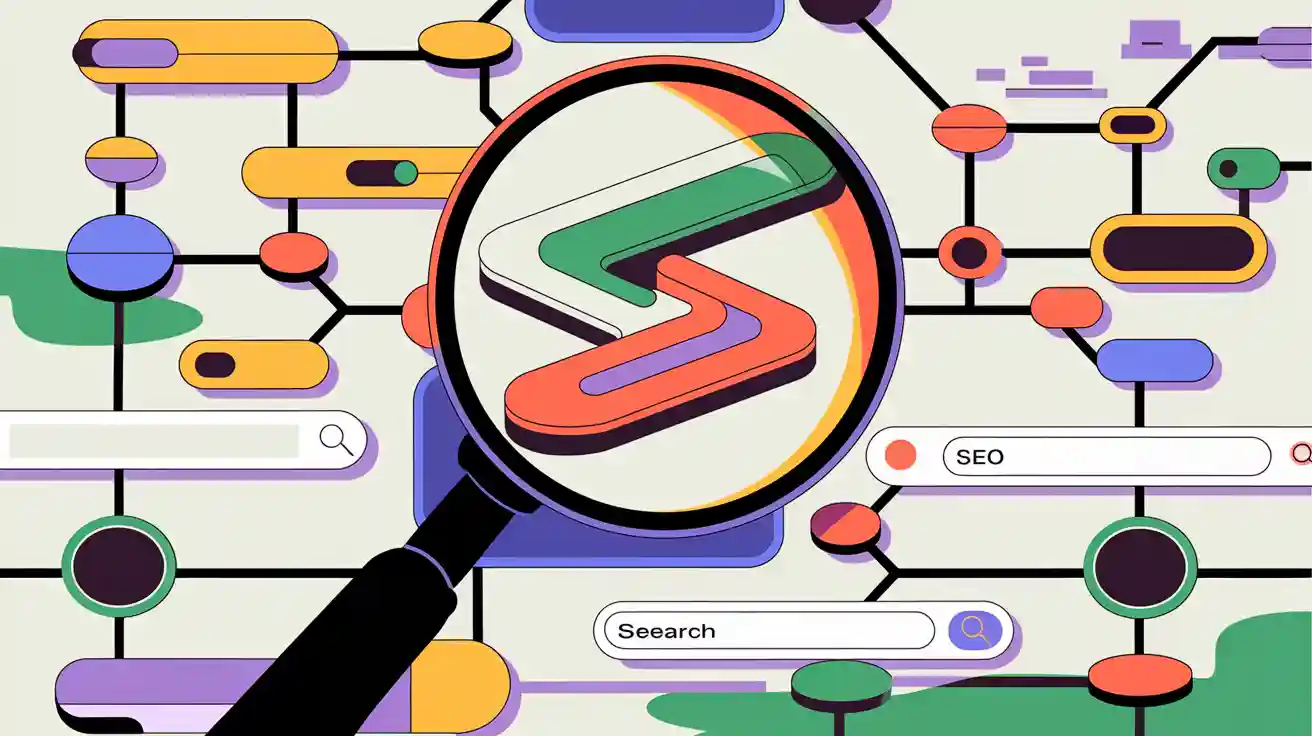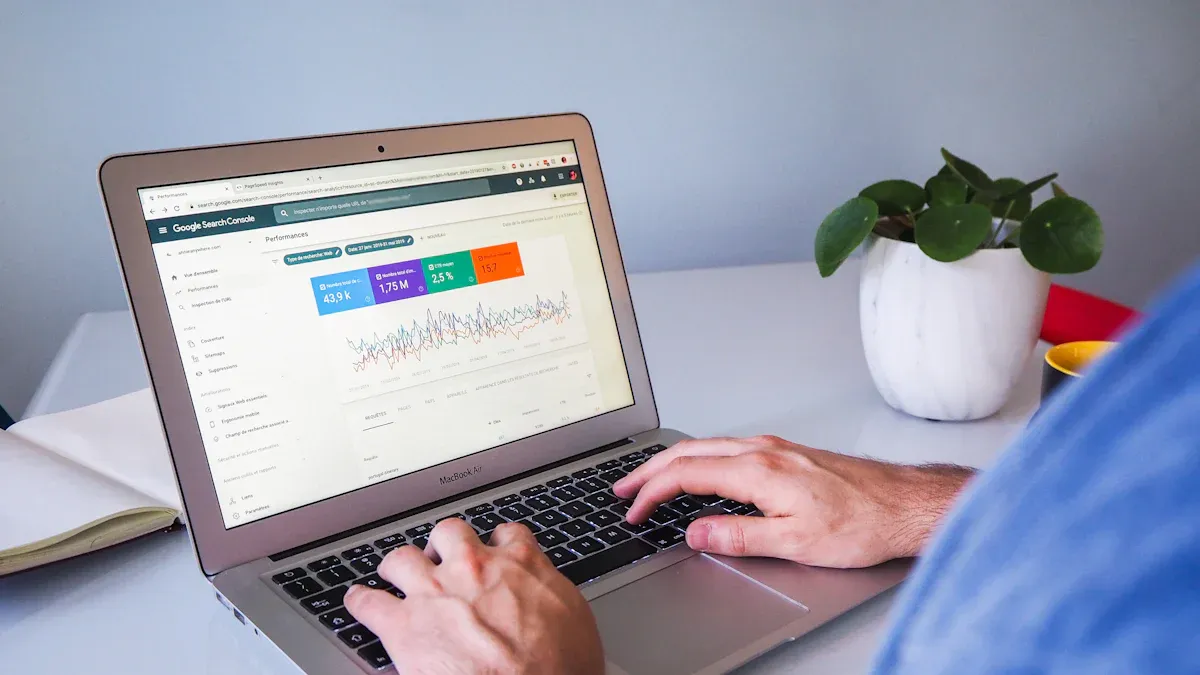What Are Fake Backlinks and Why Do They Matter in SEO

Fake backlinks are tricky links made to cheat search engines. These links often come from paid or spammy sources. They try to fool search engines into boosting a website's rank. But using these tricks can hurt your website's trust. Search engines like Google punish sites with fake links. This can lower your website's ranking. Knowing about fake backlinks helps keep your links clean. Avoiding paid links and using honest methods builds trust. This trust is important for users and search engines.
Key Takeaways
Fake backlinks can hurt your website's search rankings. Search engines like Google punish sites with bad links, lowering their visibility.
Using fake backlinks can ruin your site's reputation. People might stop trusting your site if it seems spammy or unreliable.
Check your backlinks often to find and remove bad ones. Tools like Ahrefs and SEMrush can help you fix these problems.
Work on getting real backlinks by creating good content. Great articles bring real links and make your site more trustworthy.
Stay away from bad SEO tricks like buying links. These tricks might help for a short time but can cause big problems later.
Why Fake Backlinks Matter
Impact on Rankings
Fake backlinks can hurt your website's search rankings a lot. Search engines like Google care more about good links than many links. If your site has too many fake links, it looks dishonest. This can lead to penalties that lower your search ranking.
Search engines update their systems to catch fake backlinks often. These updates can cause your site to drop in rankings fast. Instead of helping, fake backlinks can hide your site behind honest competitors.
Risks to Reputation
Fake backlinks don’t just hurt rankings; they harm your reputation too. When search engines find fake links, they see your site as spammy. This can make people doubt your website’s trustworthiness.
Fake backlinks can bring penalties and harm your site’s image.
If your site connects with bad sources, users may stop trusting you. Fixing a bad reputation takes years and costs more than any short-term gains.
Long-Term SEO Consequences
Fake backlinks can cause big problems over time. They might help for a short while, but the risks are worse. Search engines will find these links and punish your site later. This can make you lose visitors, which hurts your growth.
A company lost all its Google rankings after penalties. Their site had fake links and broke Google’s rules. They lost traffic and had to work hard to recover.
To prevent this, focus on getting good links from trusted sites. Smart SEO plans aim for real user trust and long-term success.
Identifying Fake Backlinks
Signs of Fake Backlinks
Fake backlinks have clear signs that make them noticeable. They often come from bad-quality websites or private blog networks (PBNs). These sites usually lack trust and have poorly written or reused content. Very cheap link deals are another warning. For example, offers like "50 dofollow links for under €50" often mean fake links.
Real backlinks cost more and match the quality of the website. For example:
Sites with up to 20,000 visits charge about €81.33 per post.
Websites with 20,001 to 75,000 visits charge around €220.65.
Platforms with over 200,000 visits charge €455.01 or higher.
If prices are much lower than these, the links are likely fake. Always check where your links come from to keep your site safe.
Tools to Check Backlinks
Good tools help find problems in your backlinks. Tools like Ahrefs, SEMrush, and Moz show details about domain authority, page authority, and spam scores. These numbers help you decide if a linking site is trustworthy.
AI tools make backlink checks even better. For example:
Indicator | What It Means | How AI Helps |
|---|---|---|
Domain Authority (DA) | Shows how strong a website is, scored 1 to 100. | AI checks DA to see if the site is trusted. |
Page Authority (PA) | Measures how well a single page can rank. | AI looks at PA to judge the power of pages linking to you. |
Relevance | Checks if the linking site matches your content. | AI reviews content to ensure links fit your topic. |
Anchor Text | The clickable words in a link. | AI checks anchor text for variety and avoids overuse of the same words. |
Link Placement | Where the link appears on the page. | AI values links in main content more than in sidebars or footers. |
Link Attributes | Tags like dofollow or nofollow. | AI checks these tags to see how much SEO value the link gives. |
Traffic and Engagement | Shows how many people visit and interact with the linking site. | AI studies traffic data to see if the link can bring visitors. |
Spam Score | Shows if a site might be punished for spam. | AI checks spam scores to avoid harmful backlinks. |
These tools make it easier to find fake backlinks and protect your rankings.
Warning Signs in Backlink Profiles
Some clues in your backlinks can show fake links. For example, links from hacked sites often create spammy mini-sites. These may boost rankings for a short time but lead to penalties later.
Anchor text that doesn’t match your content is another problem. If the clickable words in your links don’t fit your topic, search engines might think your site is spam. Regular checks can catch these problems early.
Other warning signs include:
Links from unrelated or bad-quality websites.
A sudden rise in backlinks without more traffic.
High spam scores on linking sites.
Using tools like archive.org and SEO analyzers can uncover issues in site history and backlinks. This helps keep your link profile clean and trusted.
Fixing Fake Backlinks
Ignore Harmful Links with Disavow Tool
Bad links can hurt your website’s ranking. Google’s Disavow Tool helps ignore these harmful links. But, only use it after trying other ways first. For example, contact the website owners to remove bad links.
Some examples show mixed results with disavowing links:
A site ignored 15,000 bad links but saw no ranking change.
After removing the disavow file, rankings improved a lot.
Later, an update boosted rankings by 140%, even with old bad links.
This shows disavowing links isn’t always needed. Focus on finding truly harmful links before using this tool.
Ask Website Owners to Remove Bad Links
Contacting website owners is a smart way to fix bad links. Use tools like Google Search Console to find spammy links. Once you spot them, politely ask the owners to remove them.
Here’s how to do it:
Write a polite email explaining why the link is bad.
Share the exact page URL with the bad link.
Follow up if they don’t reply in a week.
This helps clean your links and shows search engines you care about your site.
Check Your Backlinks Often
Checking your backlinks often keeps your site safe. Use tools like Ahrefs or SEMrush to find bad links. Watch for sudden link increases or links from unrelated sites.
Steps to check your backlinks:
Use tools to find spammy links.
Ask website owners to remove bad links.
Use Google’s Disavow Tool if needed.
Regular checks catch bad links early and protect your site’s ranking and trust.
Preventing Fake Backlinks

Build Organic Backlinks
Creating natural backlinks helps improve your site's trust and rank. These links come from trusted sites that share your content naturally. To get them, make useful and high-quality content people want to share. For example, articles over 3,000 words get 77.2% more backlinks than shorter ones. Backlinks are also one of Google's top three ranking factors. More linking websites often mean better rankings.
Content marketing is great for getting organic backlinks. Around 40.7% of marketers say it’s the best way to build links. Using AI tools can increase your chances of getting links from trusted sites by 40%. Focus on quality, not quantity, to build a strong website.
Avoid Black-Hat SEO Practices
Avoid bad SEO tricks to keep your backlinks clean. Buying links or using private blog networks (PBNs) might help quickly but can lead to penalties. Fake backlinks from these methods hurt your site's trust and rank.
Instead, use honest methods like guest blogging on trusted sites or working with industry experts. Search engines reward sites that follow their rules and care about users. By avoiding bad practices, you protect your site and grow safely.
Work with Reputable SEO Experts
Working with trusted SEO experts can improve your backlink plan. Experts can find bad links, build good ones, and boost your SEO. For example, an e-learning company, Muzigal, grew its traffic by 193% and improved its domain rating from 15 to 37 with expert help. Another company, Associations Online, increased traffic by 240% and ranked #1 for a keyword.
These examples show how experts can help manage backlinks well. Choose SEO partners with proven success and ethical methods. This keeps your site’s links clean and trustworthy.
Keeping your backlinks clean is key to protecting your site. Check your backlinks often to find harmful ones early. This lowers the chance of search engine penalties. Don’t use tricky link-building methods, as fixing penalties is hard. Use honest SEO strategies to build trust and grow steadily. Studying competitor backlinks can help you find new link ideas. Staying proactive keeps your site trustworthy and strong over time.
FAQ
What are fake backlinks?
Fake backlinks are made to trick search engines. They often come from bad or unrelated websites. These links can hurt your site's trust and ranking.
What happens if you use fake backlinks?
Using fake backlinks can get your site punished by Google. Your rankings might drop, and people may stop trusting your site. Fixing these problems later is hard.
How can you identify fake backlinks?
You can find fake backlinks by checking where they come from. Look for links from spammy sites, sudden link increases, or mismatched anchor text. Tools like Ahrefs or SEMrush can help spot them.
Can fake backlinks be removed?
Yes, you can remove fake backlinks. Ask the website owners to delete them. If they don’t, use Google’s Disavow Tool to block harmful links. Checking your backlinks often helps.
Why should you avoid black-hat SEO practices?
Black-hat SEO tricks, like buying fake links, can cause penalties. These tricks may work for a short time but hurt in the long run. Focus on honest methods and good content for steady growth.
See Also
Understanding Backlink Purchases and Their SEO Consequences
Defining What Constitutes A High-Quality Backlink
Comparing DoFollow And NoFollow Links: Importance For Backlinks
